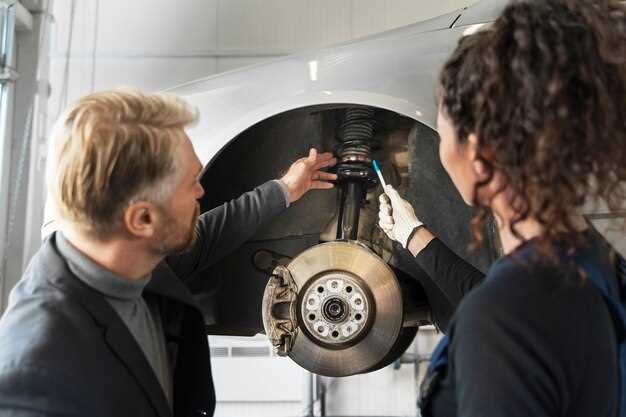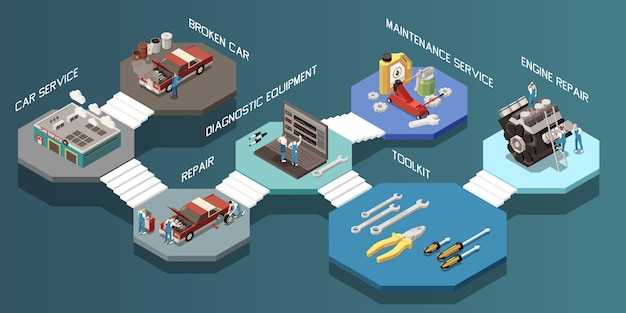
Oxygen sensors play a critical role in the emission control systems of import vehicles, ensuring optimal performance and fuel efficiency. These devices monitor the level of oxygen in the exhaust gases, providing essential data to the engine control unit (ECU). Accurate readings from oxygen sensors allow the ECU to adjust the air-fuel mixture, which is vital for maintaining engine efficiency and minimizing harmful emissions.
Over time, oxygen sensors can wear out or become sluggish due to exposure to high temperatures and contaminants. A malfunctioning sensor can lead to increased fuel consumption, failure to pass emissions tests, and even potential engine damage. Understanding how to identify and replace faulty oxygen sensors is crucial for import vehicle owners who want to maintain their vehicles’ performance and compliance with emission regulations.
This article will provide a comprehensive guide to replacing oxygen sensors in import vehicles, detailing the signs of failure, the tools required, and the step-by-step process of the replacement. Whether you are a seasoned mechanic or a DIY enthusiast, this information will equip you with the knowledge needed to tackle this essential maintenance task efficiently.
Identifying the Right Oxygen Sensor for Your Import Model

When it comes to replacing an oxygen sensor in your import vehicle, selecting the correct part is crucial for optimal performance and emissions control. Oxygen sensors are not universal, and different models may require specific specifications tailored to their engine management systems.
Start by consulting the owner’s manual or the manufacturer’s specifications for your vehicle model. This documentation typically lists the exact part numbers for compatible oxygen sensors. Additionally, note the type of oxygen sensor your vehicle uses–some imports may have upstream (pre-catalytic converter) and downstream (post-catalytic converter) sensors that serve different functions.
Another method is to use the Vehicle Identification Number (VIN) to search for the appropriate oxygen sensor. Many auto parts retailers and online databases allow you to input your VIN, which helps in finding the exact match for your vehicle’s make and model.
If you lack access to the manual or online databases, you can visually inspect the old oxygen sensor, looking for identification markings or part numbers. This can be a useful reference when shopping for a replacement. Ensure that you compare the dimensions and connector type as well, since even minor discrepancies can affect installation and functionality.
Lastly, consider purchasing from reputable manufacturers known for quality and reliability. This can help avoid issues related to poor performance or premature sensor failure, ensuring your import vehicle runs efficiently and meets emissions standards.
Step-by-Step Guide to Safely Remove and Replace Oxygen Sensors

Replacing oxygen sensors requires careful attention to detail for optimal vehicle performance. Follow these steps to safely remove and replace them:
1. Gather Necessary Tools and Materials
Before beginning the replacement, ensure you have the following tools: a ratchet, oxygen sensor socket, wrench, and anti-seize compound. Additionally, acquire a compatible oxygen sensor for your vehicle model.
2. Prepare the Vehicle
Park the vehicle on a level surface and engage the parking brake. Turn off the engine and allow it to cool completely to prevent burns.
3. Locate the Oxygen Sensors
Identify the location of the oxygen sensors in your vehicle. Typically, you’ll find them in the exhaust system–usually before and after the catalytic converter.
4. Disconnect the Battery
To prevent any electrical issues, disconnect the negative terminal of the battery. This step is crucial for ensuring safety while working on the vehicle’s electrical system.
5. Remove the Old Oxygen Sensor
Using the oxygen sensor socket, carefully unscrew the old sensor from its location. Apply slight pressure while turning counterclockwise. If it is stuck, carefully use penetrating oil to loosen it. Ensure you do not damage surrounding components during this process.
6. Clean the Threads
Once the old sensor is removed, clean the threads in the exhaust pipe with a wire brush to remove carbon deposits. This ensures a proper seal for the new sensor.
7. Apply Anti-Seize Compound
Apply a small amount of anti-seize compound to the threads of the new oxygen sensor. This will prevent the sensor from seizing in the future, making future replacements easier.
8. Install the New Oxygen Sensor
Carefully screw in the new oxygen sensor by hand to avoid cross-threading. Once it is hand-tight, use the oxygen sensor socket to tighten it securely, but do not over-tighten.
9. Reconnect the Electrical Connector
Reconnect the electrical connector to the new oxygen sensor. Ensure it clicks into place securely and there are no loose connections.
10. Reconnect the Battery
Reattach the negative terminal of the battery, ensuring a snug fit. This step restores power to your vehicle’s systems.
11. Test the Vehicle
Start the engine and allow it to reach operating temperature. Monitor for any warning lights on the dashboard and listen for unusual sounds. If everything appears normal, take the vehicle for a short test drive.
12. Perform a Diagnostic Check
After a test drive, use an OBD-II scanner to check for any trouble codes related to the oxygen sensor. Clearing any codes ensures the sensor is functioning properly and the vehicle’s emissions system is optimized.
Troubleshooting Common Issues After Oxygen Sensor Replacement
After replacing an oxygen sensor in an import vehicle, several issues may arise that can affect the vehicle’s performance and emissions. Identifying and solving these problems promptly is essential for maintaining optimal functionality.
One common issue is the illumination of the Check Engine Light (CEL) shortly after the replacement. This can occur due to improper installation, such as a loose connection or an incorrect voltage supply. To troubleshoot, verify that the sensor is securely connected and check for any wiring damage. Additionally, employing an OBD-II scanner can help identify specific error codes related to the new sensor.
Another frequent problem is changes in fuel efficiency. If the vehicle exhibits decreased mileage despite the oxygen sensor replacement, it might indicate a faulty new sensor or other related components, such as the fuel injectors or the engine control unit (ECU). Conducting a thorough diagnostic can determine whether the new sensor is operating within the specified range and if all related systems are functioning correctly.
Rough idling or stalling can also occur after installation. This might be linked to the sensor providing incorrect readings, leading the ECU to mismanage the air-fuel mixture. It’s crucial to examine the oxygen sensor’s wiring, oxygen sensor type compatibility, and overall engine health to resolve this issue effectively.
Additionally, if the vehicle fails an emissions test post-replacement, it could signal underlying issues beyond the oxygen sensor. Other components, such as catalytic converters or exhaust leaks, should be assessed. Ensuring that all systems are in good condition and that the new sensor is calibrated correctly can help pass the emissions evaluation.
Lastly, complete a test drive after the replacement. Observe how the car performs under various conditions. If there are persistent symptoms such as poor acceleration or unusual sounds, further investigation may be necessary to ensure the installation was done correctly and that the vehicle’s overall performance is restored.




